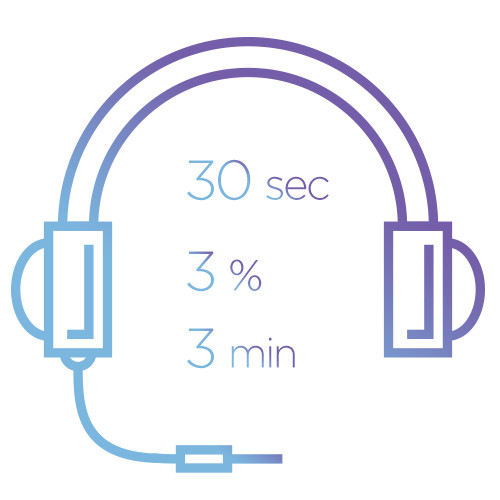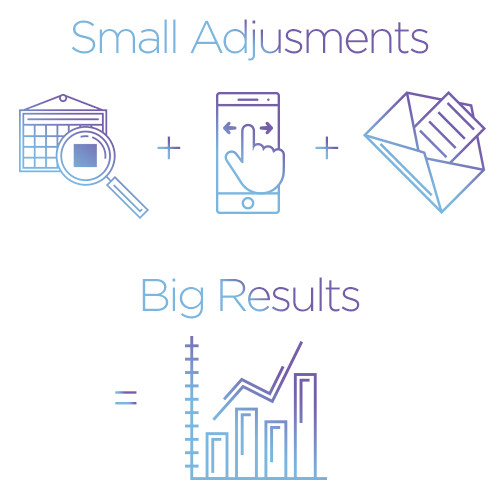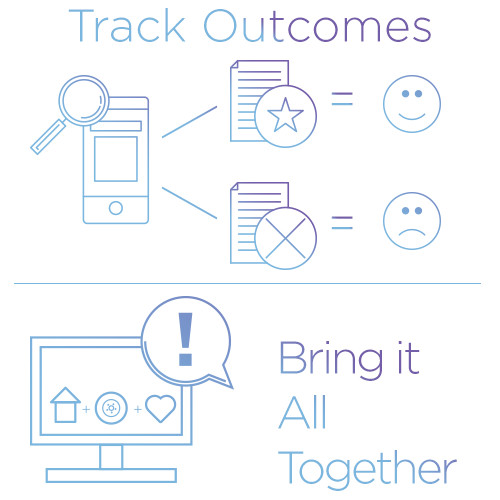Billing - Managing Your Results
Published on October 19, 2017
"You can’t simply buy expensive software and expect ‘better’."
We ended our last discussion on the subject of analyzing your data in order to assess how your billing process is performing for your customers. We talked about various data elements which can demonstrate customer behavior. Once identified, these data points can indicate important changes that you can make to improve your portfolio's performance.
Once you have meaningful information, you are equipped to make changes that can directly impact your customer – improving both their experience with your organization and your financial results.
So what types of changes can specifically be made to improve customer experience and performance?
The TELEPHONE CONVERSATION – the most intimate of customer experiences – and the Rule of 3’s.

It should take no longer than 30 seconds for a customer to reach a human being. If it takes your customers longer, they could become frustrated. Consider increasing the number of staff members in your call center.
No more than 3% of callers should hang up before they reach a person–poor performance on this can originate from complex phone menus or (as in the prior bullet) an inadequately staffed call center. If you can reduce this percentage, you will directly improve customer perception. Consider simplifying the choices and adding the option to reach a person immediately. Scrutinize the phone tree within your integrated voice response (IVR) telephone system for opportunity to streamline your customer care process.
During a call, few things are more frustrating to a customer than finally getting to a person only to discover that they don’t have the answers. If the phone calls last too long, more than 3 minutes, it could be an indication that your customer service team needs further education and training. Take some time to listen to phone calls and make sure that the right information is being delivered the first time. If your team doesn’t have the answers to common questions at their fingertips, identify the weaknesses and conduct education sessions.
Structuring the right PAYMENT TERMS – payments should improve premium retention.

- If you see that certain payment plans result in fewer cancellations, then you should consider making adjustments. Extend or shorten the terms you offer based upon historical cancellation rates.
- Some lines of business may respond better with more reminders. For example, truckers that are frequently on the road may fair better with their payments if they receive text message reminders of an upcoming due date. Enhance your outbound communication platform and take a proactive approach to preempting cancellations.
- If payment plans that provide for a lower down payment result in higher cancellations then you should consider increasing the initial payment required to bind. It is true that competition can drive lower down payments but find the balance...enough to prevent the customer from cancelling but not so high to lose the sale.
- Customer demographics can help identify different behaviors. For example, perhaps less tech-savvy customers would respond better to paper invoices (rather than only electronic delivery). More progressive customers may want a hassle-free automatic debit option from their bank account. Other types of customers may be more likely to make their payment if given a longer advance notice of an upcoming payment date, or more frequent reminders. No consideration should be too small. Today's billing platforms make it very easy to accommodate varying customer needs. Make certain that your billing plan engenders the best response from customers in the form of timely payments.
Are your VALUE-ADDED SERVICES actually adding value?

- You should look for a correlation between usage of your mobile site and your cancellation experience. Is your mobile solution improving customer retention? (i.e. do customers that use the mobile site tend to cancel less often?). If there is not a strong correlation, consider promoting the use of the website to more customers and possibly re-configuring the interface to easily allow an online payment to be made.
- Is there a connection between the medium over which you send reminders to your customers and the cancellation rate of their accounts? My children rarely look at their email but they respond immediately to text messages! For the best results, tailor the reminder to the audience.
- Are your cross-selling messages generating additional leads? If not, you need to find out why. Is it placement? Content? Imagery? Find the messages that lead to greater customer inquiries and model new messages after them. Keep messages fresh. Once a message becomes stale, customers will stop seeing it.
Companies with the best of intentions don’t always dot all of the i’s and cross all of the t’s. Managing the results of your research is just as important as conducting the research in the first place. Don’t just gather all the relevant statistics and think your job is done!
The goal is to increase premium, improve retention and make customers happy. This will only happen if you continually adapt your offering for the customer who expects something new and better.
Written By: Todd Greenbaum